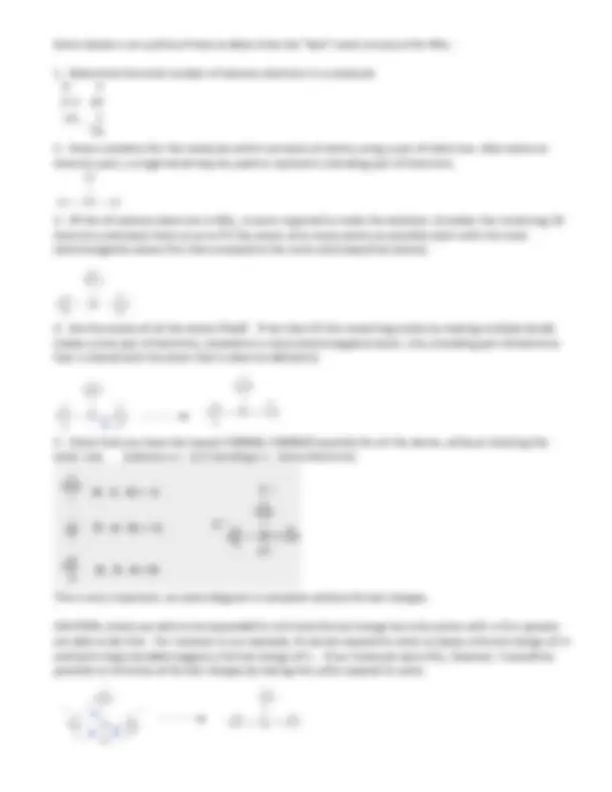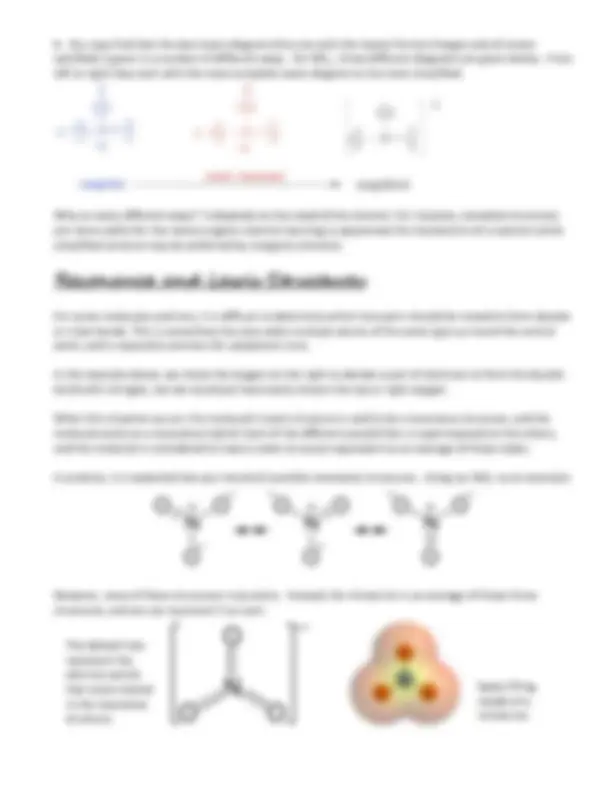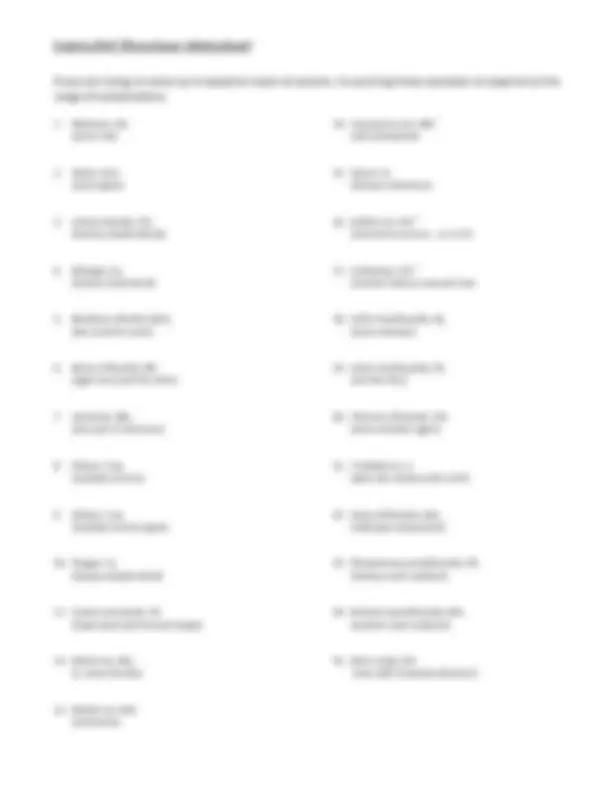





Study with the several resources on Docsity

Earn points by helping other students or get them with a premium plan


Prepare for your exams
Study with the several resources on Docsity

Earn points to download
Earn points by helping other students or get them with a premium plan
Community
Ask the community for help and clear up your study doubts
Discover the best universities in your country according to Docsity users
Free resources
Download our free guides on studying techniques, anxiety management strategies, and thesis advice from Docsity tutors
The rules for drawing Lewis structures, also known as electron dot diagrams, which are used to represent the valence electrons in a molecule and determine its structure. calculating the total number of valence electrons, arranging atoms around the central atom, forming double and triple bonds, and filling octets. It also discusses resonance structures and provides examples of various Lewis structures.
Typology: Lecture notes
1 / 5

This page cannot be seen from the preview
Don't miss anything!




1. Calculate the total # of valence electrons (e-‐) a. Consult the molecular formula and sum up all the valence electrons from the separate atoms. b. Add one for each (-‐) charge (extra electron); c. Subtract one for each (+) charge (missing electron). 2. Draw a molecular arrangement a. Choose the central atom(s). The least electronegative atom is almost always the central atom. o For example, in ClO 2 , the Cl is the central atom; in SF 5 the S is the central atom. b. Occasionally, you will need to choose the unique atom, even when it is the most electronegative: o For example, the O in Cl 2 O. c. A wrong choice usually will be signaled by your being unable to write a valid structure. d. Arrange the other atoms around the central atom, in accord with the normal valences of the atoms. That is, do not place more atoms around a central one than it normally can bond to. o For first and second row elements the maximum valence = the Group number through Group IV; after that, it is: 8 -‐ (the Group number). o The difference is that up through IV, the atoms tend to donate electrons to get an octet, whereas beyond IV, they accept electrons. o Recognition of exceptions will come with experience. e. You may find that you will have to place fewer atoms than normal around a central one; this is taken care of later. f. Hydrogen is never the central atom. It forms only one bond, so it must generally be in the outer layer of atoms. Therefore, place hydrogen atoms last. 3. Insert bonding electron pairs a. Insert pairs of electrons between all pairs of atoms that are to be bonded together. If this uses up all available electrons, go to Rule 5. 4. Complete octets a. Place any remaining electrons on peripheral atoms as unshared pairs, starting with the most electronegative such atom. o Fill this atom up to an octet. o Then proceed to the next most electronegative, and so on. b. Remember that hydrogen can only have two electrons, and so cannot have any unshared pairs. If any electrons remain unused, place them on the central atom as unshared pairs. 5. Form double & triple bonds a. If the central atom still lacks a full octet, and does not belong to a group that doesn’t require a full octet (ex. Be, Al), then move unshared pair of electrons from the peripheral atoms to form double or triple bonds as necessary. b. Assign a formal charge if it is a polyatomic ion, and enclose the structure in brackets. Exceptions There are exceptions to the octet rule.
Notably, this occurs often with elements above period 3 that have d orbitals that can contribute to molecular structure.
For some molecules and ions, it is difficult to determine which lone pairs should be moved to form double or triple bonds. This is sometimes the case when multiple atoms of the same type surround the central atom, and is especially common for polyatomic ions. In the example above, we chose the oxygen on the right to donate a pair of electrons to form the double bond with nitrogen, but we could just have easily chosen the top or right oxygen. When this situation occurs, the molecule's Lewis structure is said to be a resonance structure, and the molecule exists as a resonance hybrid. Each of the different possibilities is superimposed on the others, and the molecule is considered to have a Lewis structure equivalent to an average of these states. In practice, it is expected that you record all possible resonance structures. Using our NO 3 -‐ as an example: However, none of these structures truly exists. Instead, the nitrate ion is an average of these three structures, and we can represent it as such: Space filling model of a nitrate ion The dotted lines represent the electron pair(s) that is/are shared in the resonance structure.
Lewis Dot Structure Worksheet If you are trying to come up to speed on Lewis structures, try working these examples to experience the range of complications.